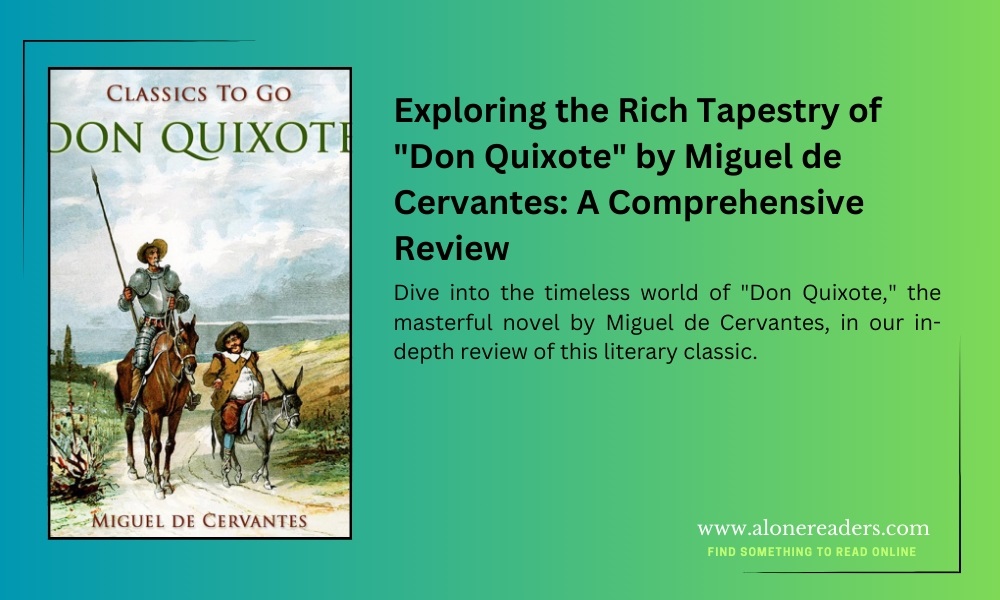
Miguel de Cervantes' "Don Quixote," originally published in two parts in 1605 and 1615, is often regarded as one of the greatest literary works ever written. This novel, full of intricate irony and satire, delves into the decline of chivalry and the disparity between romantic illusion and mundane reality. Through the adventures of its titular character, Don Quixote, and his loyal squire, Sancho Panza, Cervantes crafts a rich narrative that is both a comedy and a profound critique of society.
"Don Quixote" follows the story of a low-ranking nobleman from La Mancha in central Spain, who, driven mad by reading too many chivalric romances, sets out to revive knighthood and bring justice to the world under the name Don Quixote. Accompanied by Sancho Panza, his pragmatic yet loyal squire, Quixote embarks on a series of absurd but earnest adventures. He famously tilts at windmills, mistaking them for monstrous giants. Each misadventure is a thread in a larger tapestry that portrays the conflict between reality and illusion, the old and the new, and idealism versus practicality.
Cervantes' narrative style is incredibly innovative for its time, pioneering the use of metafiction and unreliable narrators, which would go on to influence modern literature profoundly. The novel's structure is episodic, featuring a series of loosely connected incidents that build on one another to create a vivid portrait of Spanish life during the late Renaissance. The interplay between the idealistic and noble-hearted Quixote and the earthy, sceptical Sancho Panza creates a dynamic that has enthralled readers for centuries.
One of the most remarkable aspects of "Don Quixote" is its deep irony and layered narrative. The reader is never fully certain if they should laugh or empathize, as Cervantes masterfully blurs the lines between the absurd and the poignant. Quixote's noble goals often lead to comedic situations, but they also reveal the flaws and harsh realities of the world he wishes to reform. This complexity makes the novel a fertile ground for analysis, and its themes remain relevant even in modern discussions about truth and fiction, justice, and morality.
The character of Don Quixote himself has become an icon in literary culture, symbolizing the eternal dreamer and idealist whose noble aspirations are both ridiculous and deeply human. Sancho Panza, on the other hand, serves as a grounding force, representing the common man's wisdom and practicality. Together, they make an unlikely pair whose adventures speak to the core of human experience—the pursuit of personal ideals and the reality of their attainments.
Cervantes' work also provides critical insights into the social, political, and religious issues of his time through the lens of humor and satire. The various characters they meet during their travels—from innkeepers and peasants to rogues and noblemen—create a microcosm of Spanish society. Each encounter exposes the hypocrisies of the social orders and the human tendencies that transcend time and culture.
In terms of literary significance, "Don Quixote" is celebrated for its innovation in form and its influence on the literary canon. It is often cited as the first modern novel and has been translated into nearly every major language, reflecting its universal appeal. The book's impact on later literary movements, such as the Realism and Modernism, underscores its pivotal role in the evolution of Western literature.
In conclusion, "Don Quixote" by Miguel de Cervantes is not just a book but a monumental narrative rich with philosophy, humor, and criticism. It challenges the boundaries between truth and fiction, and between historical narrative and literary creativity. With its enduring themes and unforgettable characters, "Don Quixote" remains a vital part of the global literary heritage, a profound study of the human condition, and a must-read for anyone interested in the foundations of modern storytelling.